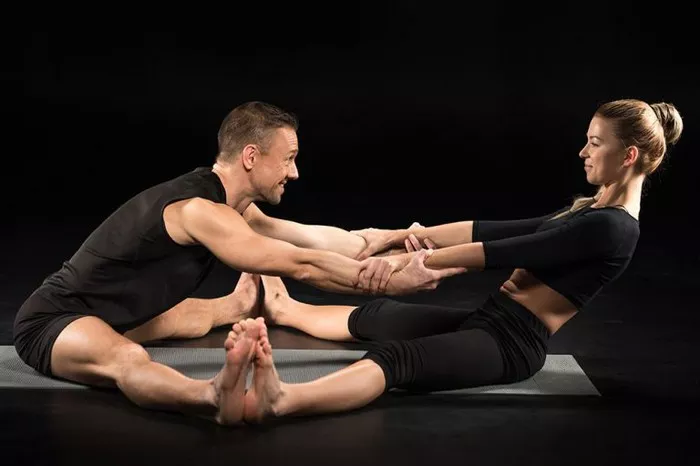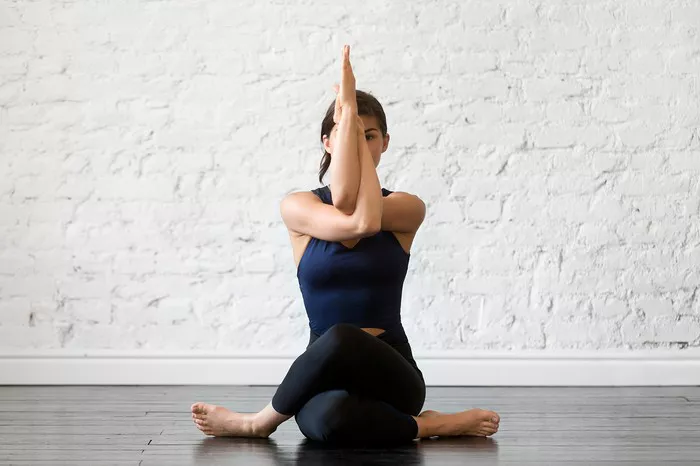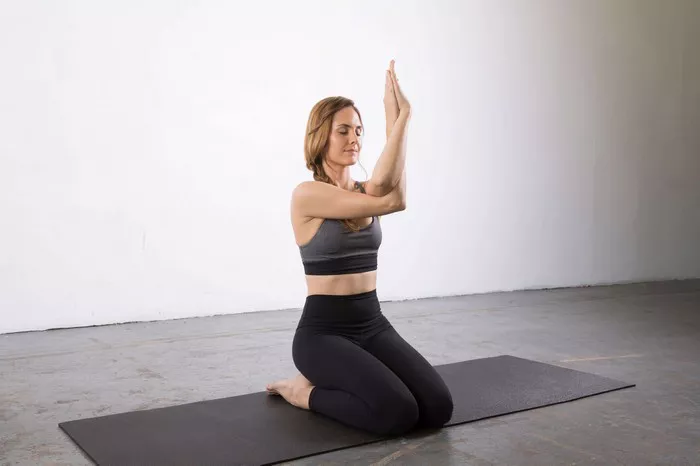Yoga is more than just a physical practice; it is a holistic way of living that can enrich every aspect of your life. The ancient system of yoga, which originated in India thousands of years ago, encompasses a range of physical, mental, and spiritual practices. While many people are drawn to yoga primarily for its physical benefits—such as improved flexibility, strength, and posture—it offers much more than just a workout. When practiced consistently and with intention, yoga can serve as a powerful tool for cultivating mindfulness, balance, and peace, both on and off the mat.
In this article, we will explore how to adopt a yoga lifestyle that integrates the core principles of yoga into daily life. We will discuss how to incorporate yoga’s physical postures (asanas), breathing techniques (pranayama), meditation, ethical guidelines (yamas and niyamas), and mindfulness into your routine. Ultimately, adopting a yoga lifestyle is about fostering a deep connection to your body, mind, and spirit and living with greater awareness, compassion, and purpose.
Understanding the Yoga Lifestyle
Before diving into the specific practices, it’s important to understand what it means to embrace a yoga lifestyle. Yoga is often thought of as a series of physical exercises or poses, but its true essence lies in the unity of body, mind, and spirit. The term “yoga” itself means “union” or “to yoke,” signifying the process of bringing together the different aspects of our being.
A yoga lifestyle is one that integrates the principles of yoga into everyday life, making it not just a physical practice, but a way of being. It involves bringing mindfulness and presence to everything you do, from eating and exercising to interacting with others and even managing stress. It is a path of self-awareness, self-discipline, and self-care that encourages you to live authentically and in harmony with yourself and the world around you.
Step 1: Create a Regular Yoga Practice
The first step in adopting a yoga lifestyle is committing to a regular yoga practice. This doesn’t mean you need to practice for hours every day, but setting aside time for yoga regularly will help you begin to embody the principles of yoga more deeply.
Start with the Basics: If you are new to yoga, begin with simple poses (asanas) and gradually build your strength and flexibility. It’s best to start with a beginner class or follow online videos to learn proper form and alignment. Some foundational poses include Downward Dog (Adho Mukha Svanasana), Child’s Pose (Balasana), and Mountain Pose (Tadasana).
Consistency Over Intensity: Yoga is a journey, not a destination. It’s better to practice regularly, even for just 20-30 minutes each day, than to push yourself too hard or try to achieve advanced poses too quickly. The key is to develop consistency and patience. This will allow the physical, mental, and spiritual benefits of yoga to unfold gradually.
Listen to Your Body: Yoga is a practice of self-awareness, so it’s important to honor your body’s limitations. Avoid pushing yourself into discomfort or pain. Respect where your body is today and practice from a place of self-compassion. Over time, your body will naturally grow stronger and more flexible.
Explore Different Styles: There are many styles of yoga, from slow and restorative practices like Hatha and Yin Yoga to more vigorous styles like Vinyasa and Ashtanga. It’s helpful to explore different types of yoga to find the one that resonates most with you. You may find that your practice evolves over time and that different styles suit different moods or needs.
Step 2: Cultivate Mindfulness Through Pranayama (Breathing)
One of the core components of a yoga lifestyle is mindfulness, which can be cultivated through pranayama, the practice of controlling the breath. Pranayama techniques can help you calm the mind, reduce stress, and increase energy levels. The breath is often referred to as the bridge between the body and mind, so mastering conscious breathing can significantly enhance both your yoga practice and your everyday life.
Here are some simple pranayama practices to get started:
Ujjayi Breath (Victorious Breath): This breath is often used in Vinyasa and Ashtanga Yoga to help focus the mind and warm up the body. To practice Ujjayi breath, inhale and exhale through the nose, slightly constricting the back of the throat so that you create a soft, ocean-like sound. This breath helps to lengthen the breath, focus the mind, and create a sense of calm during your practice.
Nadi Shodhana (Alternate Nostril Breathing): This technique is excellent for calming the mind and balancing the left and right hemispheres of the brain. To practice, close your right nostril with your thumb and inhale through your left nostril. Close the left nostril with your ring finger and exhale through your right nostril. Inhale through your right nostril, then close it and exhale through the left nostril. Continue for several rounds, focusing on the smooth, steady rhythm of the breath.
Kapalabhati (Skull Shining Breath): This is a more energizing pranayama technique that involves rapid exhalations through the nose, with passive inhales. It helps to clear the mind, detoxify the body, and increase mental clarity. It’s important to practice Kapalabhati with caution, especially if you are new to pranayama or have any respiratory conditions.
Incorporating pranayama into your daily routine, whether through a formal yoga practice or simply while sitting in meditation, will help you cultivate a sense of awareness and calm that extends beyond the mat.
Step 3: Meditation and Mindfulness
Yoga and meditation are inextricably linked. While yoga postures help to strengthen and stretch the body, meditation helps to strengthen the mind and cultivate inner peace. Meditation is an essential part of adopting a yoga lifestyle, as it promotes mindfulness, self-awareness, and mental clarity.
Start Small: If you’re new to meditation, start with just a few minutes a day. Find a quiet space where you can sit comfortably and bring your attention to your breath. Whenever your mind starts to wander, gently bring your focus back to your breath without judgment.
Practice Guided Meditation: If you’re unsure how to meditate on your own, try listening to a guided meditation. Many apps and online platforms offer free guided sessions for beginners, with themes ranging from stress reduction to gratitude.
Body Scan Meditation: A simple way to practice mindfulness and body awareness is through a body scan meditation. Start at the tips of your toes and gradually bring your attention up through each part of your body, noticing any sensations, tension, or discomfort along the way. This helps to bring awareness to the present moment and cultivate a sense of relaxation.
Mindful Movement: In addition to seated meditation, you can practice mindfulness through gentle movement. Slow down your yoga practice and focus on each movement, aligning it with your breath. This can help cultivate a deep sense of awareness and presence.
Step 4: Follow the Ethical Guidelines (Yamas and Niyamas)
Yoga is not just about physical postures and meditation; it is also a philosophy that includes ethical principles for living. The Yamas and Niyamas are the first two limbs of the eight-limbed path outlined by the sage Patanjali in the Yoga Sutras. These principles guide us in how we relate to ourselves, others, and the world around us.
Yamas (Restraints):
Ahimsa (Non-violence): Practice compassion and kindness toward yourself and others. This extends to your thoughts, words, and actions.
Satya (Truthfulness): Be honest with yourself and others. Seek to live authentically and with integrity.
Asteya (Non-stealing): Avoid taking what does not belong to you, whether it’s physical possessions or intangible things like time and energy.
Brahmacharya (Moderation): Practice self-control and moderation in all aspects of life, especially in relation to desires, energy, and indulgences.
Aparigraha (Non-possessiveness): Let go of attachment to material possessions and the need to accumulate things. Embrace simplicity and contentment.
Niyamas (Observances):
Saucha (Purity): Keep your body, mind, and surroundings clean. This includes personal hygiene, mental clarity, and a clean environment.
Santosha (Contentment): Cultivate a sense of gratitude and contentment with what you have. Avoid unnecessary longing for what you don’t have.
Tapas (Discipline): Commit to your practice and life with dedication and perseverance. Tapas encourages us to engage in practices that refine and strengthen our character.
Svadhyaya (Self-study): Take time to reflect on your actions, thoughts, and beliefs. Engage in practices of self-inquiry and deepen your understanding of yourself.
Ishvara Pranidhana (Surrender to the Divine): Trust in a higher power, whether that’s a spiritual practice, the universe, or the inherent wisdom of the body. Surrendering to this wisdom helps you to remain open to growth and transformation.
Living by the Yamas and Niyamas provides a moral and ethical framework that fosters personal growth, compassion, and connection to others. Integrating these principles into your daily life will deepen your yoga practice and help you live a more balanced, fulfilling life.
Step 5: Embrace Holistic Health and Self-care
Yoga also encourages a holistic approach to health, which involves taking care of your physical, emotional, and mental well-being. In addition to your yoga practice, here are some lifestyle habits that complement a yoga lifestyle:
Eat Mindfully: A yoga lifestyle encourages eating nourishing, whole foods that fuel your body and mind. Practice mindfulness while eating by slowing down, savoring each bite, and being aware of the sensations in your body. Consider adopting a plant-based or whole foods diet if it aligns with your values, but the key is to eat with awareness and gratitude.
Get Adequate Rest: Rest is essential for recovery, rejuvenation, and mental clarity. Yoga teaches the importance of balancing effort with relaxation. Make sure you are getting enough sleep and taking time for restorative activities such as yoga Nidra or deep relaxation techniques.
Practice Gratitude: Take time each day to reflect on the things you are grateful for. Keeping a gratitude journal is a powerful practice that can shift your perspective and increase your overall sense of happiness and fulfillment.
Stay Active: In addition to yoga, engage in other physical activities that bring you joy and support your overall health. Walking, swimming, cycling, or dancing can complement your yoga practice and help keep you strong and vibrant.
Step 6: Foster Compassion and Connection
A key tenet of yoga is compassion—not just for others, but also for yourself. As you deepen your yoga practice, make an effort to connect with others in a spirit of love, kindness, and empathy. Support your community, whether it’s your yoga community, family, or friends. Acts of service, kindness, and generosity can help you cultivate the sense of interconnectedness that yoga promotes.
Conclusion
Adopting a yoga lifestyle is not just about performing physical postures or following a specific set of practices; it’s about embracing a way of living that honors your body, mind, and spirit. It involves bringing mindfulness, compassion, and balance into all areas of your life, from your yoga practice to your relationships, diet, and personal growth.
By committing to a regular yoga practice, cultivating mindfulness through breath and meditation, following the ethical guidelines of yoga, and embracing holistic health, you can begin to experience the transformative effects of a yoga lifestyle. Remember, yoga is a journey, not a destination—take your time, listen to your body, and enjoy the process. The more you integrate these practices into your life, the more you will experience the peace, clarity, and joy that yoga brings.
Related Topics:



















